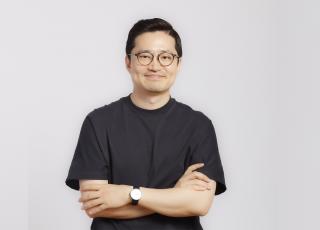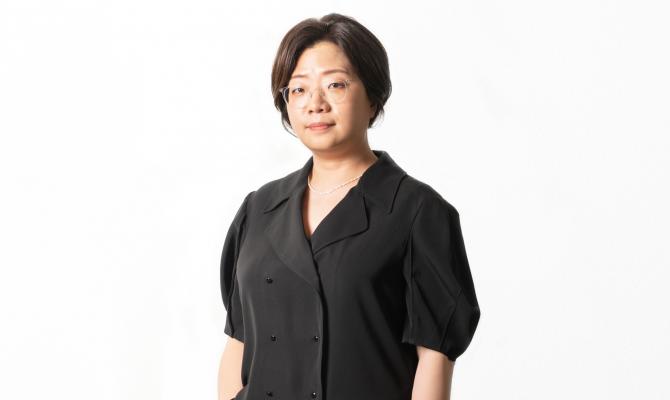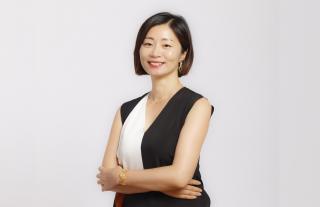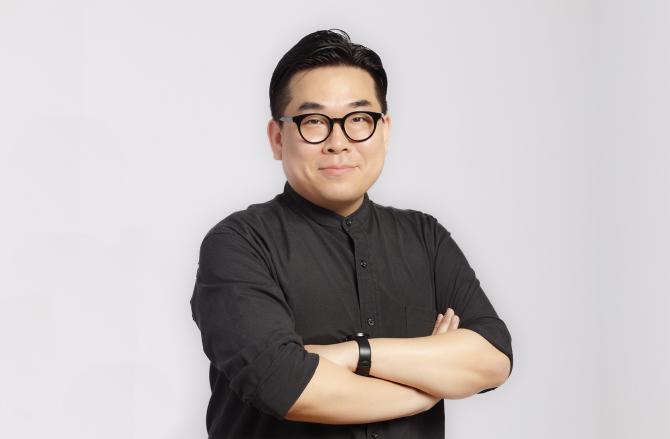Magazine
Design incorporates objects, people,
ideas based on the small pleasures of everyday life.
Meet your Beautiful design world with the DDP Design Fair.
-

The easiest way to create novelty
Collaboration Curator: Ha Ji-hoon, Professor, Department of Living Design, Kaywon UniversityAs an artist, one of the most common questions I get asked about my work is "Why do you work with tradition?". Maybe it's because it's not the norm, or maybe it's because they think, "Why work with tradition when there's something better?” Unless you're God, creation is about making something that already exists look new. If there is nothing, we can't create. Therefore, it is a natural act of creation to look at the past and use it as a material. Even leading overseas designers look to other countries' traditions to create something new, so I think we should start with our own. Personally, I find the most attractive traditional furniture to be the soban. Its distinct differences from tables in other cultures, its distinct regional distinctions such as gaksang (one person, one table) or for seating, and najuban, yongyeongban, haejuban, etc. make me feel more than just the beauty of its form. At a time when plastic is being criticized more than ever, why did I have to design a soban (table) made of plastic? The answer is not that plastic is bad, but that it is badly used. It is impossible for us to live without using plastic. We need to reduce the bad use, which is easy to use and throw away, and make it something that can be cherished and used for a long time. If plastic doesn't decay for 500 years, it can be passed down for 500 years. The RE:SOBAN pictured here is made from a recycled plastic called LET ZERO and contains no other material than recycled plastic, so it can be recycled 100% when discarded. Its KNOCK-DOWN design reduces its volume to one-third of its size for transportation. The traditional item of the soban is no longer stuck in the past, but has become a “tradition of the future”, reflecting the current times. Single-use plastic containers are a prime example of bad material use. During the COVID-19 pandemic, I saw a lot of delivery meal containers piling up every day, so I thought I'd suggest a better way to use them. It uses the same material and manufacturing method as a disposable container, but it can be used sparingly and for a long time. As a designer, I think it is better to use eco-friendly materials and make them last longer than to recycle them. How to make something last for a long time is not only about durability, but the aesthetics, such as with the roof of a hanok, aesthetics is an important factor that makes people value it. It is necessary to have value both when used and when not used. Exploring our past in this way can make us feel guilty for not appreciating it, like picking ripe fruit without permission. The guilty pleasure is that the easy source of creation is so close that we can't see it.
2023-12-0621 -

Design for sustainable consumption and production
Maezm Co-CEO/ Shin TaihoSince 2016, the United Nations has published the Sustainable Development Goals (SDGs) and outlined several ways to address the 17 main goals by 2030. The 12th of the 17 goals is Responsible Consumption and Production. This goal is one of the most relevant to our lives, as it aims to improve the global environment alongside a range of other issues for humanity such as poverty, hunger, gender equality, and sanitation. Then what is sustainable consumption and production, and what can we do towards the goal as designers? First, let's talk about sustainability. It's a ubiquitous term now, but it all started with a 1987 report from the World Commission on Environment and Development (WCED). It defined sustainable development as "development that meets the needs of the present without compromising the ability of future generations to meet their own needs." In other words, we should consume our resources in a way that leaves enough for the next generation. And it starts with trees. Industrialized wood resources grow in managed forests, and after a certain period, they are cut down and turned into material. In their place, younger trees are planted to complete the cycle, which is the beginning of sustainability. The reason why we see the term sustainability so much now is because the same logic should be applied to resource utilization in all industries. So, how does design relate to this trend? Designers are practitioners on the front lines of production and consumption. Before a product is introduced to the market, we think about how it should look and function, and once it's on the market, we design all the mediums through which it communicates with consumers. We may call it product design, communication design, brand design or something else, but regardless, designers play the key role in the production and consumption of goods. The biggest issue here is actually materials. When it comes to production, materials are the foundation and the beginning of an industry. However, it is safe to say that materials are rarely discussed at the center of the actual product development process. Materials are mostly determined by price, and even then, they are an afterthought in the development process. However, this has been changing in recent years. As an extension of the Material-driven Design Methodology, we are seeing a lot of attempts to put materials at the forefront of every step of the process and let them drive the entire process. The reason for this is simple. The shift from looking at products through the lens of economic logic to considering environmental logic naturally puts materials at the center. To do so, designers will need to understand the entire system of production, use, and disposal, not just the processing and utilization of materials, and design in the best way possible within it. A designer's role is not just to think about materials when creating a product. Even after the product is created, the designer must constantly communicate the need and justification for the material to the consumer. It's a process of persuasion. Conventional economic logic dictates that products made from sustainable materials should be more expensive. However, if we consider the environmental value of the entire cycle of production, use, and disposal, the cost is not high. The challenge is to convince consumers to share in the costs that will be incurred in the future, not now. This logic is only possible if we think about society and the environment, not the individual, and it is the role of the designer to express and make this logic understandable. That way, consumers can make the right choices. If we think of the act of consuming as a vote that can change the world, then design can help consumers cast their vote for the values they support with refined and accurate information, rather than confusing information. In every era, design has always reflected the zeitgeist of the time, changing and influencing the world. In this sense, the UN's announcement of sustainable consumption and production, along with the dizzying news in the world, is something that we as designers need to reflect on.
2023-11-1623 -

The challenge of being a designer for your time and generation
Jongkim Design Studio Owner / Launching Curator Jong KimIn the epilogue of my second book, A Promenade in Space, there is a sentence that reads, "These days, Korea wins everything but the baguette." It is true that Korea, and Seoul in particular, has reached the highest level of competence in many ways. While it is a blessing to live in such a rich environment that comes with such a high level of excellence, it also deepens the question of "how" to plan and design for the new era for designers like me. Thinking about when AI, which is developing at the speed of light, will come to dominate design makes me truly anxious. As a true believer in human emotion, it still seems a long way off, but AI's growing presence and expanding capabilities are undeniable. Young Koreans these days have what I call a mutual high level of discernment. They have an excellent sense of beauty that is almost instinctive from birth. Moreover, their love for self-grooming is beyond imagination. I don’t mention this to dismiss them. When I evaluate the work of the students I'm teaching, I often find myself self-reflecting, and I feel strongly that I have something to learn from these young people who respond so quickly to new things. Moreover, their new talents have no limits, so they reject the set framework and build their own worldview through various attempts and challenges. It's a worldview that's quite different from the one I used to have, where I built up skills, philosophized, and created stories for spaces by focusing on aligning patterns and numbers according to frames and norms. Along with this worldview, they create stunning spaces that capture the public's hearts and branding that gets standing ovations without a single textbook expertise. The loss of expertise means that the design field will become more competitive, which naturally makes me think about what kind of talent we need for design in Korea in the future. In my classes, I always emphasize that "The future of designers is not only about creating visually beautiful spaces, but also about planning and telling stories about how to use them correctly." This isn't just a challenge for future generations, it's actually a challenge I’ve given myself as well. You might ask me, "Okay, so how do I tell the story of a space?" I don't think there's a perfect answer, but I think the best answer from my experience is to break down the boundaries of disciplines and categories. It's also important to be open-minded and inclusive. If you have an attitude of trying to learn even if it's not your field of interest, treating people and taking in brands without discrimination and prejudice, I would suggest that you will become a solid and long-lasting designer. Gone are the clichéd days when only fashion designers could become creative directors of luxury fashion brands. It's a world where singers become fashion directors, rappers become commercial designers, and ordinary people become world-famous celebrities. It's a world where anyone and everyone can be "special", including the young people reading this article.
2023-11-1431 -

The Joy of Design
Bongyu Song, BKID Design Director/Launching Curator In the fall of 2023 in Seoul, there are many events taking place. I saw an article that said there are more than 40-50 pop-up stores per weekend in Seongsu-dong. It is literally the age of pop-up stores. Many brands are trying hard to make their presence known, whether it is to introduce new products or to promote their products. Unlike traditional fixed stores, these are limited-time events, lasting as little as a day or as long as a few weeks, but that limited time is what makes people come to pop-up stores. It's also a fun way to visit Seoul. Recently, I have taken up gardening as a hobby. I've been planting crops, starting seeds, and experiencing the trials and tribulations of being a beginner gardener in my 50 square meters of space. When I go into the gardening community to do research and ask questions, I find that people are enjoying gardening in a lot more ways than in the design community. Whether it's on a desk at work, on an apartment terrace, or on the roof of a house, there's always an amateur gardener with a small pot and a plant in some sort of airy, well-drained space. The gardening community shares the joy of gardening by exchanging tips on how to cut branches for planting, at what angle to cut them, and what kind of soil to use for planting. It was so much more free and fun than the design community and design-related events, which often share very realistic information such as job information and about qualifications, how to win design awards, and design as an industry. I felt so envious of the small warm interaction of sharing the small pleasures of gardening that can be enjoyed in your spare time. For us designers, is design a tool to compete for survival as a profession/industry, or can it be a culture that can be enjoyed?In the current design scene in Seoul, designers are questioning whether they are enjoying, communicating, and enjoying the pleasure of designing together, and as an indicator of industry, design is often evaluated by quantitative measures. Design can be a genre of culture, like film or art, or it can be a collaborator to help other industries/cultures grow. As designers, we may have to use design as both a profession to make a living and as a culture for pure enjoyment.
2023-10-1873 -

Design to Reflect Your Lifestyle
Oh Se-eun, Head of Furniture & Home Decoration, Lifestyle Division, Lotte Department Store/Launching CuratorI'm not an expert on the design industry, but having worked as a buyer in department stores for many years, I can tell you that the word design means a lot more in retail than it did when I started. I think that 10 years ago, if you were buying furnishings for newlyweds in a department store, you were almost always choosing a brand based on a recommendation from your mom or a friend who had gotten married first, so you were shopping within a narrow set of options, and the associated sales tended to be concentrated around those brands. But as time has gone on, people have become more and more likely to choose a brand or a product assortment based on their own preferences, and the idea of mega-trend, wedding-specific brands is becoming less and less common. And we're seeing this across all product categories, not just newlyweds. How has the meaning of brand and design changed in the face of increasingly diversified and personalized customer choices? I think people who used to be looking for a brand that was recognizable to others are now looking for a brand that expresses them and the design and story of the brand and the product are the most important criteria for that choice. Customers who find a design that fits their lifestyle and values, and a brand story that resonates with them, become passionate advocates for the brand and its products. In response to this change in customer behavior, the interior design of branded stores that once looked similar have been transformed into spaces that showcase the brand's concept and story, becoming an important marketing element.Previously, department stores were a place with “100 things” and their central concept was products, but now it seems that they should be a space with various designs and stories that can express the “100 lifestyles” of customers.
2023-10-1173 -

The Power To Sustain the Planet and People
An Kangeun, CEO of INNE Art Management/Collaboration CuratorThe world's leading contemporary art fair recently returned to Seoul, and it was even bigger and better than last year. Following in the footsteps of Paris, Miami, London, Basel, and Hong Kong, Seoul has come to expect a huge influx of domestic and international visitors every year during the fair. Artists, galleries, collectors, members of the art community, and the general public are expected to flock to the fair this year because it's a brief window of opportunity to see world-class artworks ranging from millions to billions of won in one place. However, there is also a sense that to many people on the other side of the fence, it can be seen as “beautiful trash”. Just as Banksy's billions of won a piece painting on the windows of a ruined building had an owner who destroyed the house because he thought it was just graffiti, how many works at this art fair will be preserved through the ages with a true understanding of the value of the artwork and the inspiration and comfort that art can bring to people? We live in an era where AI is building homes and clothes, treating and educating people, and even classifying, recognizing, predicting, and creating works of art. User-centered design, ethics and fairness, visual and interaction design, performance and efficiency optimization, continuous improvement, ethics and fairness... these are the principles of AI design, and we want AI systems that are trained based on exhaustive data in a way that minimizes bias and respects diversity to have a positive impact on users and society. At this point, I wonder, while the new paradigm of AI will bring an endless amount of art, industry, and so on, what is the alternative to AI for the global tropics, where the temperature is predicted to rise by more than 4 degrees in 7 years? Could many of those principles really be data reflecting the ecosystems of half the planet that may disappear in seven years?Will we still be in the same rush to create and consume "beautiful trash" as we are now? What is the irreplaceable thing that designers and small business owners can do in the new era that AI will usher in?The answer I thought of is communication, collaboration, and know-how. I hope they will eventually become our goals and obligations to sustain the planet and humanity. I hope we don't repeat the contradictions that have created so many tumblers and eco-bags in the name of environmental protection. Some of the richest and most powerful people in the Middle East are investing trillions of dollars in research to extend human life. It makes me ask more seriously, what does it mean to live another 200 years with trillions of “beautiful trash” on a planet that has become a sea of fire and water?
2023-10-0763 -

The romanticized view of sustainability
Eunhwan Cho, Co-CEO of Maezm/Collaboration CreatorWith the focus on sustainability in design having never been greater, as a participant and mentor at the DDP Design Launching Fair, there are a few things I've come to realize. One of them is that most designers and makers equate sustainability with eco-friendliness. This naturally influences their desire to incorporate sustainability into their work, focusing their attention on the materials used in production and the disposal of their designs afterwards. While this is certainly a desirable development, I often find myself having the same conversations over and over again, and my resistance to a one-size-fits-all approach often leads to a sense of resentment. As a result, I often find myself asking my mentees if there are other ways to think about and express sustainability. This may be me being perverse because we're all talking about the same thing, but it's also because there's only so much you can do about the production and post-processing of environmentally friendly materials if you're not a developer. It also makes me think about how effective these attempts will be in the context of a larger global movement, or whether they will end up producing something unnecessary again. I realize that there's a danger that this mindset will eventually boil down to "I’m just one person" but from my perspective, it's a hard battle to lose.This brings me to a story I shared with students in a graduate school class of mine last semester. Someone lamented that the tumblers they bought for the environment were accumulating at home, and that they didn't like drinking from paper straws because it felt like they were drinking from a wet cardboard box in their mouth. I jokingly remarked, "Come to think of it, you're probably emitting more carbon by bemoaning that unpleasant sensation than you're helping the environment by using paper straws." Then, a few days later, I picked up a paper straw to use for my coffee and thought to myself, "The paper must be coated to make it so smooth and hard, so is this paper 100% environmentally friendly?" And soon after, the news was full of studies from overseas showing that paper straws have harmful effects on the body, or are not even recyclable due to the coating process and added chemical compounds. It's still hard to say for sure, but it's hard to deny that many of the environmental issues we're so interested in and swept up in have a different story behind them.On that note, I personally recommend that sustainability be understood in a more romantic way, rather than in terms of big, analytical things like ingredients and circularity. Rather than being a movement that everyone should rally behind, sustainability can be seen as a romantic, personal, and private endeavor, which can be more meaningful in its own right. Keeping and loving personal items purchased long ago. It's about taking good care of the things you're attached to and passing them on to your children. It's about looking beyond functionality and choosing things that will last, even if they're a little more expensive. When I buy something, I think about it for days before I bring it into my home, and sometimes I don't throw it away because of the time I spent with it and the memories I have of it. In the end, for us as designers and consumers, creating and keeping something that will become someone's antique can also be an aspect of sustainability.
2023-10-0789 -

The final finishing touch to your space, lighting
Jeong Mee, CEO of EONSLD/Collaboration CuratorWhen I meet people for the first time and tell them I'm a lighting designer, they often ask, "Do you have any recommendations for lighting fixtures?". A lighting designer is a designer who engages in the act of designing spaces with light. When designing for lighting, they analyze the shape of the space, the finishes of the space, and think about how to make the space look with light, using lighting fixtures and lighting systems. Nowadays, lighting designers are often associated with architectural lighting and media facades, which have become more understood, but it's still an unfamiliar area of design. In the case of night landscape lighting, which is a design task that is visible to an unspecified number of people, the lighting designer analyzes the surrounding nighttime environment and creates a design concept, selects lighting fixtures, balances light, and designs how it will look at night. Nighttime landscape lighting often gives the façade of a building a different face from its daytime counterpart, creating an identity for the building. The lighting fixtures that we recognize as designer names and brands are often used as decorative features in interior lighting design. The role of light in interior spaces is to create a sense of space, to be functional for productivity, but most importantly, to be used as a finishing touch to a space. When the light is turned on and the space is illuminated, when the lights are turned off to go to sleep and the outside light is brought in, the space changes and takes on different expressions depending on the volume of light, the color of light, the shapes that are illuminated and the finishes that are reflected. When we design a lighting fixture, one of the most common mistakes we make is to design a form without thinking about the space it will be placed in. As space and design trends change over time, technology evolves, and materials become more diverse, it is important to always make the necessary design changes so that when the fixture is placed in the space or illuminated, the design will be accepted and loved without feeling awkward. Lighting is the final touch in architecture, giving a space character. It brings subjects to life and forms brand identity.
2023-10-0781





